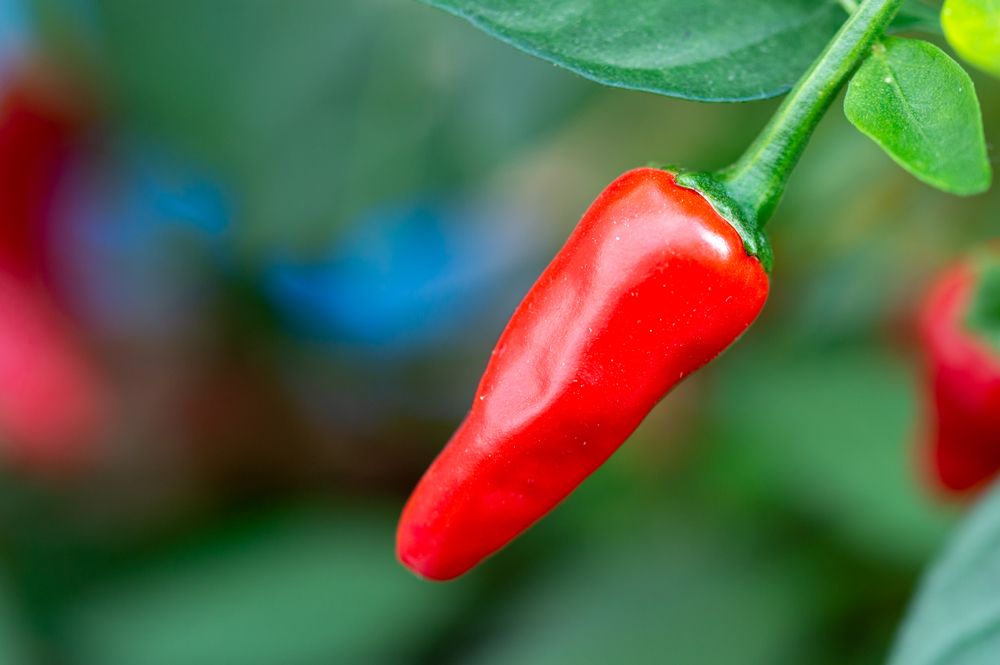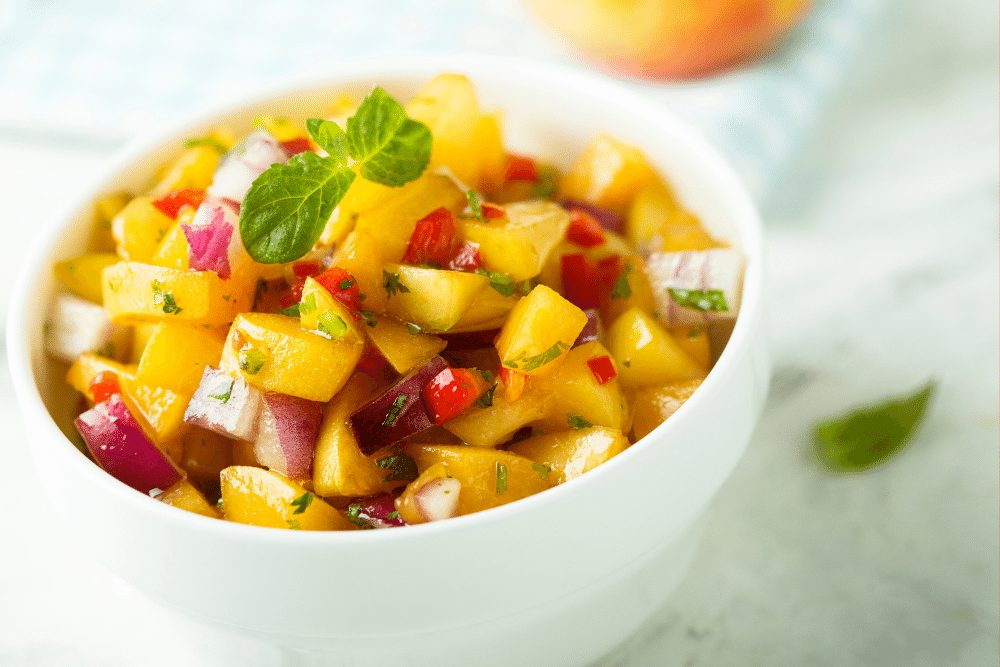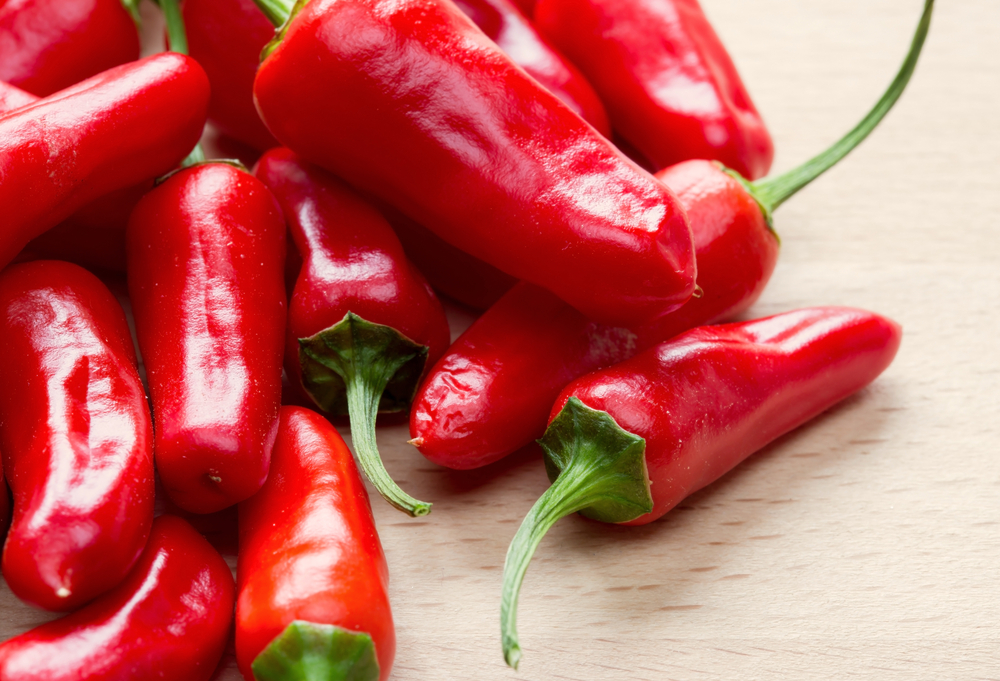Apache pepper plants are a short, bushy variety of ornamental chili that make fantastic accent pieces in any garden. Not only are these peppers beautiful for container gardening, but they are also known for their incredible flavor and spiciness.
What Are Apache Peppers?
Apache peppers are a variety of Capsicum annuum grown primarily for ornamental purposes. The plants only grow between 18-24″ in height and width, making them perfect for various landscaping and decorating applications.
The peppers are relatively small, with the classic conical chili pepper shape, averaging around 1-2 inches in length.
They follow the typical coloration pattern, starting as a bright green and slowly maturing to a yellow and eventually red when fully ripened. The pepper’s bright red color has made them a popular option as an ornamental variety.

Are Apache Peppers Edible?
If you prefer eating the pretty peppers you grow, Apaches are the ornamental variety for you! While Apaches are often grown for their ornamental uses, they are also perfectly edible and can be successfully incorporated into just about any style of cuisine.
Due to their incredible heat and simple, pepper-forward flavor, Apache peppers are considered a reasonable substitute for Thai chili peppers. Most of your favorite Asian dishes, from Kua Kling Thai curry to spicy Vietnamese pho, will benefit from the sweet, peppery flavors and intense heat from Apache chilis.
How Hot Are Apache Peppers?
Apache peppers are considerably spicy, reaching between 80,000-100,000 SHU on the Scoville scale. This makes them about 20-25 times hotter than your average jalapeno, which is usually between 2,500-8,000 on the Scoville scale.
Again, this makes them highly comparable to Thai chili peppers and chiltepin chilis, malagueta, and Siling Labuyo hot peppers. These peppers are right around 100,000 SHU at their hottest, and have similar flavor profiles to Apaches. Mild habanero peppers are also a good point of comparison, as they average between 100,000-350,000 SHUs.
What Are The Best Uses For Apache Peppers?
Many people use Apaches as accent pieces in their gardens or containers as decoration around their homes. Because the plants are relatively small and produce an abundance of brilliant red peppers, they’re certainly a sight to behold!
However, Apaches are also utilized for their spiciness. Like Thai chilis, Apaches have various culinary uses, such as pickling, drying for chili powder and flakes, diced raw as a garnish and even roasted and added to stews and soups.
I love adding Apache peppers into my salsas to add consistent heat and a nice pop of red color.

What is the difference between a poblano pepper and an Apache pepper?
Even though they are both varieties of Capsicum annuum, poblano peppers and apache peppers are different types of pepper. The two significant differences have to do with their size and their level of spiciness.
Poblanos are considerably larger than Apaches, with the typical poblano pepper measuring around 4 inches. Poblanos are, on average, 2-3 times larger than Apaches, making them much better for recipes calling for a large chili. For example, I recommend using poblanos when making stuffed peppers, as they are big enough to hold lots of filling and add a lovely smoky heat to the dish.
Coming in at 1,000-1,500 SHUs, poblanos are incredibly mild in heat, only slightly spicier than bell peppers. This means Apaches are a much better chili for making hot sauces or adding heat to a dish, while poblanos are primarily used for their fresh peppery and smoky flavors.
Where To Buy Apache Peppers
Apache peppers are difficult to find as produce in grocery stores; however, they are regularly found in their plant form at garden centers. The best way to acquire Apaches for cooking is to grow them yourself!
Fortunately, they are easy to raise, and the peppers will make a beautiful addition to your home garden among your other vegetable plants.
I’d recommend purchasing Apache pepper plant seeds through your local garden center or greenhouse. If you can’t find them at stores nearby, plenty of specialty online stores offer Apache pepper seeds.
Can You Grow Apache Peppers?
Growing apache peppers at home is an easy and gratifying experience. Apache pepper plants are incredibly hardy and resilient to most climates. If you provide them with the following conditions, your Apaches will successfully yield dozens of spicy little peppers!
- Light: Apaches require full sun for at least 8-10 hours daily. If you’re keeping your apache plant potted indoors, I’d recommend keeping it on a south-facing windowsill or another area that gets a constant source of natural light throughout the day.
- Temperature: Apache plants prefer high-temperature environments, averaging anywhere from 70°F-90°F. However, they will also survive temperatures as low as 40°F-50°F, but will not be as prolific.
- Planting: Apaches are best planted in well-drained soil after a germination period of about 10 weeks. Plant each Apache pepper plant approximately 2-3 feet apart to allow each plant enough room to grow. If you’re keeping your Apaches in a pot, ensure they have at least 12-16″ soil depth to allow the roots to grow strong.
- Days to Mature: On average, it will take your Apache plants between 70-80 days to reach full maturity.
- Watering: Apaches need a significant amount of water, so ensure that the first few inches of soil feel damp at all times. It’s recommended that you water your pepper plants at least twice a week, though this is highly dependent on your soil’s composition and rainfall. If your garden’s soil drains quickly, you might need to water more frequently.
- Fertilizing: Once you notice your plants are beginning to flower, it’s time to fertilize them. There are many fertilizers available, though organic fertilizer and compost are recommended if you intend to eat your peppers.

